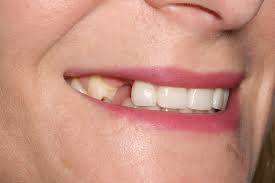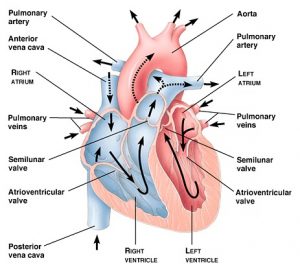Header logo
header top contact widget
Blog Archives
Recent Posts
Categories
Archives
- September 2024
- August 2024
- July 2024
- June 2024
- May 2024
- April 2024
- March 2024
- February 2024
- January 2024
- December 2023
- November 2023
- October 2023
- September 2023
- August 2023
- July 2023
- June 2023
- May 2023
- April 2023
- March 2023
- February 2023
- January 2023
- December 2022
- November 2022
- October 2022
- September 2022
- August 2022
- July 2022
- June 2022
- May 2022
- April 2022
- March 2022
- February 2022
- January 2022
- December 2021
- November 2021
- October 2021
- September 2021
- August 2021
- July 2021
- June 2021
- May 2021
- April 2021
- March 2021
- February 2021
- January 2021
- December 2020
- November 2020
- October 2020
- September 2020
- August 2020
- July 2020
- June 2020
- May 2020
- April 2020
- March 2020
- February 2020
- January 2020
- December 2019
- November 2019
- October 2019
- September 2019
- August 2019
- July 2019
- June 2019
- May 2019
- April 2019
- March 2019
- February 2019
- January 2019
- December 2018
- November 2018
- October 2018
- September 2018
- August 2018
- July 2018
- June 2018
- May 2018
- April 2018
- March 2018
- February 2018
- January 2018
- December 2017
- November 2017
- October 2017
- September 2017
- August 2017
- July 2017
- June 2017
- May 2017
- April 2017
- March 2017
- February 2017
- January 2017
- December 2016
- November 2016
- October 2016
- September 2016
- August 2016
- July 2016
- June 2016
- May 2016
- April 2016
- March 2016
- February 2016
- January 2016
- December 2015
- November 2015
- October 2015
- September 2015
- August 2015
- July 2015
- June 2015
- May 2015
- April 2015
- March 2015
- February 2015
- January 2015
- December 2014
- November 2014
- October 2014
- September 2014
- August 2014
- July 2014
- June 2014
- May 2014
- April 2014
- March 2014
- February 2014
- January 2014
- December 2013
- November 2013
- October 2013
- September 2013
- August 2013
- July 2013
- June 2013
- May 2013
- April 2013
- March 2013
- February 2013
- January 2013
- December 2012
- November 2012
- October 2012
- September 2012
- August 2012
- July 2012
- June 2012
Post-Menopausal Women Have Unique Oral Health Challenges
Posted on Nov 24, 2017 by William J. Claiborne, DDS MS
For women who are post-menopausal, the risk for developing periodontal (gum) disease and experiencing tooth loss is much greater than ever before. Research shows that it is particularly so in the first decade after menopause begins.
What causes this is the decline in estrogen levels, which leads to higher rates of bone loss. Studies show that bone loss (or osteoporosis) in postmenopausal women can be accompanied by an increased risk of gum disease.
In addition to a higher risk of gum disease, post-menopause may bring about a lower volume of saliva, which is the mouth’s natural cleansing agent. Saliva helps to keep bacteria moving out of the mouth. When it is insufficient, bacteria levels are allowed to grow beyond what the immune system can manage.
One such study found that post-menopausal females with osteoporosis had a significantly greater susceptibility for gum disease than that of women with no indications of osteoporosis. Estrogen decline after menopause also increases the risk of heart disease, osteoporosis and Alzheimer’s along with increased cavities and taste alterations.
For women on hormone replacement therapy (HRT), the restoration of estrogen has been shown to help post-menopausal women be less susceptible to these health issues. Naturally, this is based on the recommendations of your medical doctor and your receptiveness to using an HRT.
Even though your oral health is our emphasis, your overall health is our concern as well. While both are designed to work together, it’s natural that particular risk factors occur with the aging process. By keeping your oral health at an ideal level, you avoid problems in the first place or, for any that do occur, we can provide early treatment that will help you avoid greater time and costs for more complex treatment.
Begin with a healthy foundation. Call 828-274-9440 for a thorough examination.
Facing Tooth Removal? Why Dental Implant Placement Is Best Done Within 24 Hours.
Posted on Nov 20, 2017 by William J. Claiborne, DDS MS
For various reasons, a number of adults face the removal of a single tooth at some time in their lives. This may be necessary when a tooth is beyond repair than can be resolved with a crown or because of a fracture that extends below the gum line. Since every tooth plays a role in keeping adjacent teeth in their proper positions, promptly replacing a tooth after removal is a wise move.
A growing number of adults are now choosing to replace teeth with dental implants. There are a number of advantages in doing so at the time of removal, a particular one being the prevention of bone loss. By placing the implanted portion when the tooth is extracted, the risk of bone loss, known as ‘resorption,’ is minimized.
Resorption occurs when tooth roots no longer exist in the jaw bone to provide stimulation. Without the nourishment and stimulation of tooth roots, the bone begins to shrink over time. It is a fact that the teeth adjacent to areas of bone loss have the greatest risk of being the next to be lost.
Another benefit of immediate implant placement is the preservation of gum contours. When a tooth is removed, the arch of gum tissue and ‘points’ that dip slightly between each tooth begin to flatten. When an implant is placed promptly after removal, the natural contours of gum tissues are preserved.

Replacing a tooth should occur immediately to preserve bone mass and gum contours.
When two or several teeth in a row are missing, immediate implant placement can also be beneficial. Because one implant can often support a bridge of two or more teeth, this can help to curtail treatment cost while preserving the natural contours of the gum tissues.
Additionally, since the position in your upper or lower jaw bone is already to a proper depth and size, placing the implant following removal may simplify the treatment time and procedural requirements.
As a periodontal specialist, I have advanced training in treating all levels of periodontal (gum) disease as well as in the diagnosis and placement of dental implants. I regularly work with general dentists and dental specialists in team treatment so the patient enjoys an optimal outcome in minimal time.
To discuss dental implants, call 828-274-9440 for a consultation appointment to discuss the process and associated expenses.
New Study Finds Clogged Arteries More Connected To Oral Bacteria Than Fatty Foods
Posted on Nov 13, 2017 by William J. Claiborne, DDS MS
For years, we’ve been led to believe that the main cause of clogged arteries is the cholesterol-rich diet we consume. However, a recent study published by the Journal of Lipid Research has found fat molecules unrelated to butter, fatty animal meats and eggs may be the true source.
According to an article in Medical News Today (https://www.medicalnewstoday.com/articles/319967.php), the University of Connecticut (Storrs) conducted a study showing the fat molecules in plaque that are typically blamed for clogged arteries may actually originate from oral and gut bacteria.
In past studies, researchers have known there are strong connections between the bacteria of gum disease and an increased risk of heart attack and stroke. Yet, pinpointing the precise cause-&-affect has been elusive. This study may have tracked down the intricate path.
Atherosclerosis occurs when fat molecules, calcium, cholesterol, and other compounds in the blood form plaque on the inside walls of arteries. These arteries are what carry oxygen via the bloodstream to the heart, brain, kidneys, and other parts of the body.
When plaque accumulates, it can harden and narrow the arteries, thus depriving oxygen-rich blood to vital organs and tissues. This can lead to heart attack, stroke, other serious health problems and, in some instances, even death.
For decades, it was assumed that the fatty molecules of atherosclerosis, or lipids, are the result of a diet rich in foods high in fat and cholesterol. Th is study focused on the formation of plaque (that include fat molecules) as well as other growths known as atheromas.
is study focused on the formation of plaque (that include fat molecules) as well as other growths known as atheromas.
Atheromas refer to fatty masses that develop in the artery walls. Their presence activates the immune system, which recognizes that the lipids are not of human origin. This, in turn, tends to trigger inflammation. Inflammation is what leads to the thickening of the smooth muscles that line artery walls.
When the research team analyzed atheromas of hospitalized patients, they found the chemical makeup of lipids were not from animals. Rather, the fat molecules matched bacteria belonging to the Bacteroidetes family.
Bacteroidetes, fatty acids that do not have the same features as animal fat, are not typically harmful. They exist in the mouth and, in some situations, can activate gum disease but are not known to invade blood vessels. The culprit, however, lies in the lipids they secrete, which can penetrate cell walls and enter the bloodstream.
Apparently, it is an enzyme that breaks down the bacterial lipids that can activate a process that manufactures molecules that promote inflammation. When the immune system encounters the bacteria and then couples with the enzyme that creates inflammation, their combined actions can lead to an even higher risk for the formation of plaque.
The researchers are continuing efforts to further study how atheromas form where Bacteroidetes lipids accumulate. They are seeking even more evidence that fat molecules from Bacteroidetes are linked to atheroma growth, and thus to heart disease.
In the meantime, we certainly encourage you to eat a diet low in cholesterol. Yet, keep this study in mind as reinforcement to the need to maintain good oral health. For decades, research has shown the close relationship of oral health and overall health.
In addition to heart disease and stroke, past research has correlated the bacteria of periodontal (gum) disease to diabetes, arthritis, preterm babies, some cancers and impotency. Obviously, this is potent bacteria and keeping its accumulation to a minimum is beneficial to your overall health.
Is is important to know the signs of gum disease. Seeing blood in the sink while brushing, tender or swollen gums, frequent bad breath, and gums that pull away from teeth and expose sensitive tooth roots are just a few of the signs. Without treatment, gum disease will only worsen. It affects over 47 percent of American adults and is the leading cause of adult tooth loss.
Protect your smile and your overall health. In addition to a thorough at-home commitment to oral hygiene, have twice-yearly dental check-ups and watch for signs of gum disease. If you suspect gum disease exists, call 828-274-9440 to schedule an exam. This will be the first step to protecting your smile, and apparently, your heart!
Holiday Parties Can Be No Fun For Your Smile.
Posted on Nov 08, 2017 by William J. Claiborne, DDS MS
A particular joy of the holiday season is it give us the opportunity to gather with cohorts, friends and family. These gatherings are often in the form of a lavish meal, buffet, or cocktail party. By helping you to understand the challenges these get-togethers can place on your smile, we may be able to help you avoid the time and expense for treatment later on.
Here is where the risk begins: Acids in the mouth. 
Oral acids are a naturally-occurring part of the digestive process. Every time you eat or drink, an acid surges into the mouth via saliva. This acid is very strong and helps to begin breaking down food as you chew.
These acid attacks, once they begin, last from 20 to 30 minutes. So, when you arrive and pop that first cheese straw in your mouth, the acid attack begins and continues throughout the evening as long as you’re consuming about every 20 minutes or so.
The risk factors go up with what you eat.
Holiday foods are often sweet or largely carbohydrate in content (such as pigs-in-blankets, chocolate covered pretzels, etc.). When potent oral acids mix with the sugar and carbs (which converts to a sugar) in these foods, it gives a super boost to oral bacteria growth.
Of course, while sticking by the veggies and dip is helpful, what you’re drinking may be just as bad as the pumpkin pie. Drinks such as punch, wine and cocktails are no friend to your smile, either.
Although many people feel wine is a healthy drink, it is highly acidic. When this acidity mixes with oral acids, your mouth is bombarded with a potent assault strong enough to soften tooth enamel.
Alcohol, in any form, is also very drying to oral tissues. This makes it harder for saliva to keep the mouth rinsed of what is coming in. This simply aids in the production of oral bacteria. When you are sipping a drink made with colas, liquors or syrupy mixers, you merely boost the potential for damage.
Are we recommending you nibble carrot sticks and sip sparkling water at your holiday outings? Of course not. However, we can make some recommendations to help you minimize the acidity in the mouth and keep oral bacteria from running rampant.
- When nibbling, eat what you wish in a brief amount of time rather than pace out your eating for an extended period of time. Take a plate and put on it what you wish and then stop eating after. This will allow the acids to cease rather than continue.
- Be conscious of what’s in your drink. Should you have a gin & tonic or a Manhattan? Choose a drink that is lighter in calories in the form of sugar.
- When drinking, periodically take gulps of plain water and let it linger in the mouth for a couple of seconds before swallowing. This helps dilute oral acids and move them out of the mouth before they can damage tooth enamel.
- Once home, be sure to brush and floss. By removing bacteria that has accumulated in the mouth, you’ll help to decrease the risk for gum disease and cavities.
Keep in mind that bad breath is the result of an over-accumulation of oral bacteria. When you keep bacteria in the mouth under control, you’ll enjoy fresher breath. In close conversations, this is important!
This holiday season, share your smile often and with confidence. Keep your smile healthy by understanding where your risks are and how to avoid problems from occurring in the first place.


